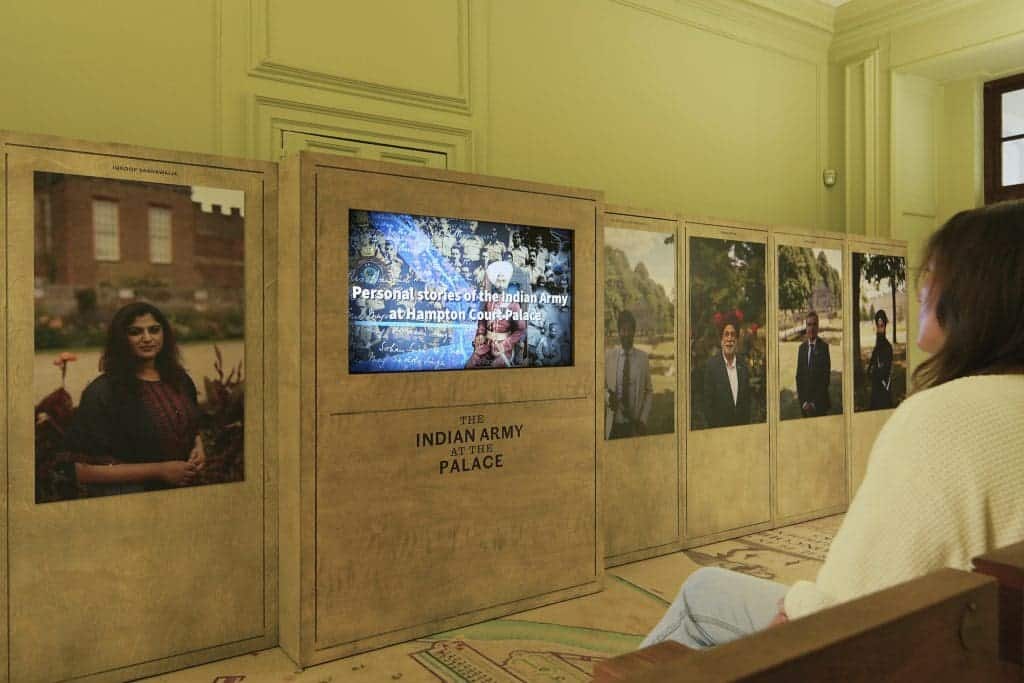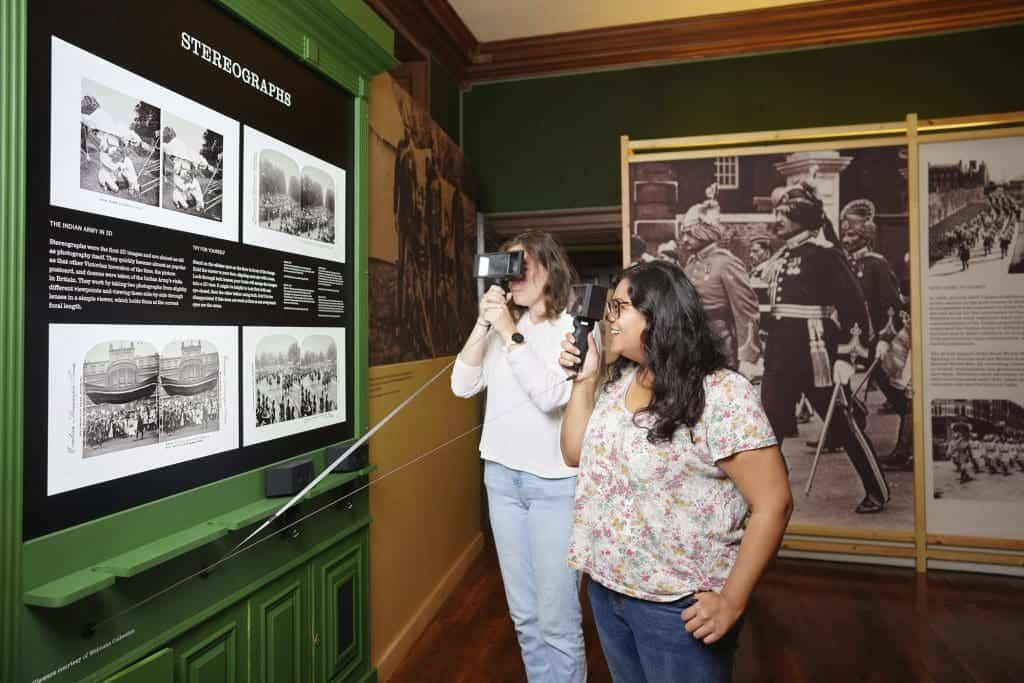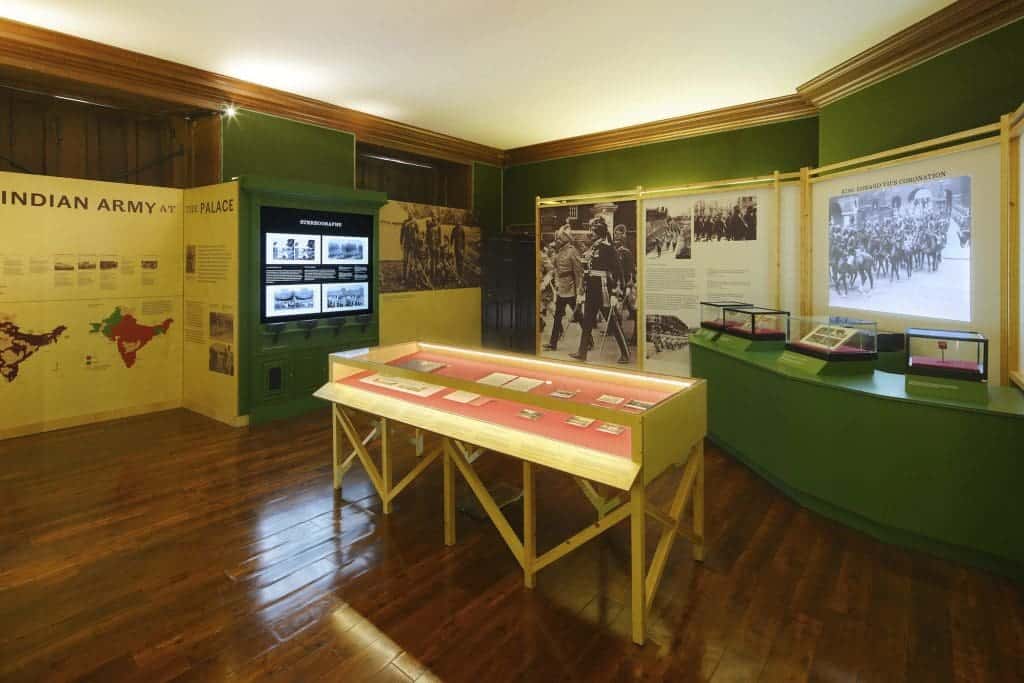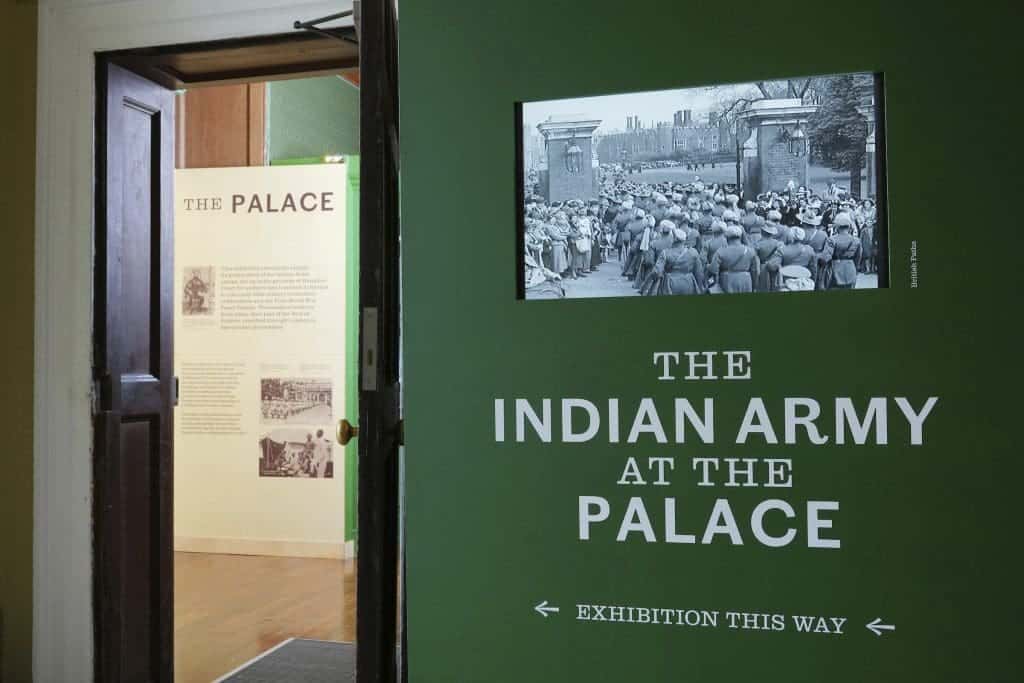A rare pin badge linked to activist Sophia Duleep Singh forms part of a new display on the Indian Army at Hampton Court Palace.
This unique and historically significant pin badge, once sold by the renowned Indian princess and activist Sophia Duleep Singh, is set to be a highlight of the new ‘Indian Army at the Palace’ exhibition at Hampton Court Palace for 2023.
This rare item, used by Sophia Duleep Singh in her efforts to support the Indian Army, now takes its place in a comprehensive display. The exhibition aims to shed light on the lesser-known narratives of Indian Army soldiers who were stationed at Hampton Court Palace in the early 20th century. It features an array of never-before-seen artefacts, photographs, films, and personal accounts, offering a vivid glimpse into this intriguing chapter of history.

Set to tell the forgotten history of the Indian soldiers that camped on its grounds in the early twentieth century, the display explores the story in detail for the first time, including the soldiers’ experiences in camp, as well as press and public reactions to their stay.

Princess Sophia’s Legacy: Honouring Indian Soldiers of WWI
The ‘India Day’ badge is the same as those sold by Princess Sophia, a former resident of the Palace and daughter of Maharaja Duleep Singh, in 1918 to raise funds for the Indian Army in World War I.
During the war Sophia was particularly keen to emulate and help the hundreds of thousands of Indians who were fighting, becoming the Honourable Secretary of the YMCA War Emergency Committee, with one event raising funds for 50,000 huts for the comfort of Indian soldiers.
She also visited and even nursed troops at Brighton Pavilion and other hospitals for Indian soldiers. The rare pin badge, which is only 2.5cm high, depicts an Indian elephant and is part of a new acquisition of Indian Army material for Historic Royal Palaces – the charity that cares for Hampton Court Palace – going on display for the first time.

A Journey Through History, Culture, and Perception in Early 20th Century Britain
The new display shares the stories of the Indian soldiers who took up residence on four occasions on the Hampton Court estate for the Coronations of King Edward VII in 1902, King George V in 1911 and George VI in 1937, as well as for the First World War Victory Parade in London. It will explore their experience within camp and more generally in England, with many of them visiting the country for the very first time.
Efforts were made in the camps to meet the cultural and religious requirements of the soldiers from many ethnic communities, and the soldiers were entertained with excursions to attractions in London and across the country. Visitors to the display will learn about the daily experiences of the soldiers camped on the grounds, from food and rationing to entertainment, travel and religious accommodation.
Through press and public reactions, it will also look more widely at the sometimes negative perceptions of the South Asian presence in Britain in the early twentieth century, as well as its impact. Their contribution to these historic occasions will be commemorated, overlooking the very grounds in which they stayed over a century ago.
The Indian Army at the Palace display will bring together a range of never-before-seen objects including photographs, maps, postcards and even a surviving military uniform, as well as the rare pin badge. The items will include many from the Historic Royal Palaces’ collection – which also go on display for the first time – including an official plan from one of the camps, press cuttings depicting the soldiers’ arrival at Hampton Court station, and Indian soldiers in and around the Palace grounds.

Shared Histories: South Asian Community Lends Personal Artifacts to Enhance Hampton Court’s Indian Army Exhibition
These objects will be displayed alongside a collection of items on loan from the South Asian community. The public call out to the South Asian community earlier this year, alongside work with community partners, has yielded some moving results – including objects submitted by direct descendants of the soldiers who once camped at Hampton Court Palace.
Items selected include a 32nd Sikh Pioneers Indian Army Officer’s tunic, medals and photos belonging to soldiers from the 1902 and 1911 contingents, original photographs of the Gurkha regiment in the 1919 parade and newspaper articles depicting the visits.
Historic Royal Palaces has worked closely with local South Asian community groups throughout the exhibition process, supporting them to share their stories and objects as part of the display. Representatives from the groups – which include A Little History of the Sikhs, who develop tours and lectures to introduce Sikh, Anglo-Sikh and Panjabi history to new audiences – have helped to expand the Palace’s history to include these stories and to select some of the objects on display. Community groups have also contributed to the object labels and short films, sharing their reflections on the items and history being told.
Highlighting Hidden Histories
Zakira Begum, Interpretation Officer, at Historic Royal Palaces said, “We’re really excited to be shining a spotlight on the stories of the Indian soldiers encampment at Hampton Court Palace, celebrating the contribution that they made to the Palace’s history. Working with South Asian community partners has been a key part of bringing this story to life, and we look forward to sharing their objects with our visitors as part of the display. We believe that our work is enriched by the involvement of a wide range of people and perspectives, and working with the community has been instrumental in creating this new display for our visitors.”
Historic relationship between the Indian Army and Hampton Court Palace
Dr Tejpal Singh Ralmill, military expert at A Little History of the Sikhs, said: “In 2021, and 2022, the Standing with Giants project has given us a platform to shine a light on the historic relationship between the Indian Army and Hampton Court Palace. This manifested in the form of presentations and tours. It was clear that our audiences were intrigued to hear of the hidden stories of our forefathers contained within the walls of the Royal Palace, and a connection that nearly all were unaware of. “
He added, “It is therefore pertinent that these stories are further explored. Through our research and outreach work, we have established connections with descendants of Indian soldiers who resided in the grounds of Hampton Court Palace in the first half of the twentieth century at historic events such as Coronations. It has been fantastic to develop upon this research and support the team at Historic Royal Palaces to interpret submissions from our community to the call-out and to work on the content of this important part of the Palace’s history.”
Read more: Latest



